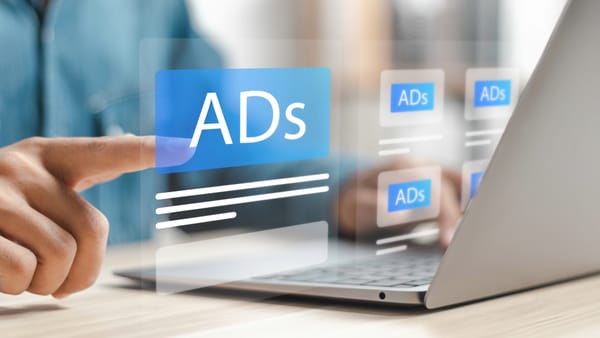Maximizing Shopify Sales with Facebook Ads: A Complete Guide for Beginners

Are you a Shopify merchant looking to boost your sales using Facebook Ads? You're in the right place! Facebook Ads can be a powerful tool for driving traffic, increasing conversions, and growing your Shopify store. In this guide, we'll walk you through everything you need to know to set up and optimize your Facebook Ads campaign from scratch.
By the end, you’ll be ready to create ads that capture attention, target the right audience, and most importantly, track conversions effectively to ensure your ads deliver results.
Why Use Facebook Ads for Your Shopify Store?
Facebook has over 2.8 billion active users, making it one of the largest platforms for online advertising. But what's truly powerful about Facebook Ads isn’t just the vast audience—it’s the detailed targeting options. You can segment your audience based on demographics, interests, behaviors, and even previous interactions with your brand.
For Shopify merchants, this means you can reach people who are most likely to be interested in your products, making Facebook Ads an incredible opportunity to grow your store.
Key Benefits of Facebook Ads:
- Targeted Audience: Reach specific groups who are likely to convert.
- Retargeting: Show ads to people who’ve already interacted with your store.
- Cost-Effective: You control your budget and can scale as you go.
- Detailed Tracking: Measure your results through Facebook’s robust analytics tools.
Step 1: Setting Up Your Facebook Ads Account
Before diving into creating your ad, you need to set up your Facebook Ads Manager. This is where you’ll manage your ad campaigns, track their performance, and adjust your targeting and budget.
Here’s how to get started:
- Create a Business Manager Account: Visit Facebook Business Manager and set up your account if you haven’t already.
- Connect Your Shopify Store: Link your Shopify store to Facebook under Sales Channels in your Shopify dashboard. This allows you to sync your products and use them in your ads.
- Install the Facebook Pixel: The Facebook Pixel is a small piece of code that tracks user behavior on your store. You’ll use this data to measure the success of your campaigns and optimize them over time.
Step 2: Choosing Your Campaign Objective
When you create a new Facebook Ads campaign, Facebook will first ask you to choose a campaign objective. This tells Facebook what your primary goal is, and it will optimize your ads accordingly.
Common Objectives for Shopify Merchants:
- Conversions: Drive sales or other high-value actions on your site.
- Traffic: Increase the number of visitors to your Shopify store.
- Engagement: Get more likes, comments, and shares on your posts.
- Catalog Sales: Target users with specific products from your Shopify store’s catalog.
For most Shopify merchants, Conversions will be the best objective, as it focuses on getting users to make a purchase on your site.
Step 3: Targeting the Right Audience
Facebook Ads’ targeting options are incredibly detailed, allowing you to get your products in front of the people who are most likely to buy.
Key Audience Targeting Options:
- Custom Audiences: Create lists of people who have visited your site, purchased from you before, or engaged with your Facebook page.
- Lookalike Audiences: Facebook can find new customers who "look like" your best customers based on their behavior and interests.
- Interest Targeting: Reach people based on their interests, such as fashion, fitness, or technology.
- Demographic Targeting: Narrow down your audience by age, gender, income, or location.
💡 Pro Tip: Start by targeting a broad audience and narrow it down as you gather data on who is converting the most.
Step 4: Creating Your Ad
When creating your ad, focus on compelling visuals and clear messaging. You want your ad to stand out in the sea of content on Facebook, so make sure it grabs attention quickly.
Components of a Great Facebook Ad:
- Eye-Catching Image or Video: High-quality visuals are key.
- Engaging Headline: Keep it short and to the point.
- Clear Call to Action (CTA): Tell users what you want them to do (e.g., "Shop Now").
- Ad Copy: Highlight the benefits of your product and why users should care. Keep it concise but compelling.
Step 5: Tracking Conversions with Facebook Pixel
Once your ads are live, you’ll want to make sure you’re tracking conversions accurately. The Facebook Pixel is essential for this—it tracks the actions users take on your site after clicking on your ad, such as making a purchase or adding an item to their cart.
But here’s where it gets tricky:
- Browser Blocking: Some browsers block tracking scripts, which means Facebook might miss some conversions.
- Ad Blockers: Many users have ad blockers that prevent the Pixel from firing.
- Shopify Pay and Fast Checkout: Some checkout methods like Shopify Pay can interfere with tracking, causing Facebook to miss conversions.
Step 6: Ensuring Accurate Conversion Tracking with XitApps Pixels
This is where XitApps Pixels comes in. If you’re relying solely on Facebook’s default Pixel, you might be missing out on crucial conversion data due to browser issues or ad blockers. XitApps Pixels is a third-party tool that solves these tracking problems by using server-side tracking. This means it pulls data directly from Shopify’s servers, ensuring accuracy even when the Pixel can’t capture the event.
Benefits of XitApps Pixels for Shopify Merchants:
- Better Accuracy: Tracks conversions even when customers use ad blockers or fast checkout methods like Shopify Pay.
- Server-Side Tracking: Captures more complete data to help you optimize your Facebook Ads.
- Improved Retargeting: With more accurate data, you can create better retargeting campaigns, leading to higher ROI.
💡 Pro Tip: If you’ve noticed discrepancies between your Shopify sales and your Facebook Ads reporting, it’s likely due to tracking issues. XitApps Pixels can help bridge that gap and give you a more accurate picture of your ad performance.
Step 7: Analyzing and Optimizing Your Campaign
After your ads have been running for a while, it’s time to analyze the results and optimize them. Focus on key metrics like:
- Conversion Rate: The percentage of people who clicked on your ad and made a purchase.
- Cost Per Conversion: How much it costs you to get a sale.
- Return on Ad Spend (ROAS): How much revenue your ads are generating compared to the cost.
Optimization Tips:
- Test Different Creatives: Run A/B tests with different images, headlines, and ad copy to see what performs best.
- Refine Your Audience: Narrow down your targeting based on who’s converting the most.
- Adjust Your Budget: Allocate more budget to ads that are performing well, and pause underperforming ones.
Conclusion: Start Maximizing Your Shopify Sales with Facebook Ads Today
Facebook Ads can be one of the most effective ways to grow your Shopify store, but only if you set them up correctly and track your results accurately. By following this guide, you’ll be able to create and optimize Facebook Ads that attract the right audience and drive real results.



